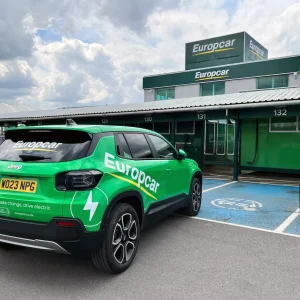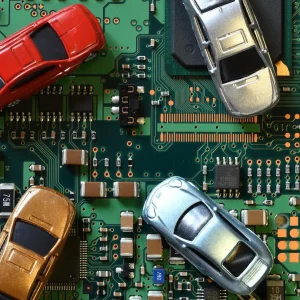Thanks to a raft of new products – including everything from a new version of the company’s best seller, the Sportage, to a factory-fresh Vauxhall Insignia-rivalling Optima – Kia is expecting to rapidly ramp up its fleet presence over the coming year.
These new models should see the brand increase sales by 25% over the next five years, from the 80,000 expected for 2015 to 100,000 in 2020 – with the expectation that this will be split evenly between fleet and retail, up from 44.6% total fleet sales in 2014.
The new Sportage off-roader, which goes on sale on 5 February, should boast diesel CO2 emissions from under 120g/km, according to Kia UK president Paul Philpott, which means it’s likely to fall into the 21% benefit-in-kind band, down from a minimum of 25% for the current diesel (and 24% for the 1.6-litre petrol). Consequently, the Kia boss states: “We expect the new car will be another great hit within fleet.”
Meanwhile, petrol power will be provided by a “lower-displacement turbo-petrol” Philpott adds, which potentially could come in the form of the new 1.0-litre motor just added to the Ceed range to replace the current non-turbocharged 1.6-litre, although a Kia spokesperson was only able to confirm that a turbocharged 1.6-litre model would be offered. As with the previous model, 60% of sales are predicted to be more economical two-wheel drive models.
As for the Optima, which arrives a month before the Sportage, Philpott has high hopes: “We’ve only had it in saloon version, which limits you to about 30% of the segment, and with a 1.7-litre diesel engine. By this time next year we’ll have a 1.7-litre diesel, a high-performance version and a plug-in hybrid.” Allied to the prospect of reduced CO2 figures, a more spacious, upmarket interior – which introduces wireless charging for mobile devices – and the addition of an estate version, the Optima will offer much greater appeal with twice its current segment coverage, Philpott states.
In addition, Kia is investing much more in establishing the new model than it did with its predecessor, claims John Hargreaves, the company’s head of fleet and remarketing: “The [new] Optima will be important for us because with the current Optima we didn’t have many cars, so we didn’t really invest much in establishing a presence for the car. We will invest a lot more in [the new model].”
Maintain residuals
Although the company is planning to grow sales dramatically over the coming years, it hopes to maintain strong residuals by avoiding relying too much on the rental industry and keeping control of as many nearly new models being sold on as possible.
Hargreaves is keen to stress: “What we won’t get dragged into is trying to grow our business on the back of growing short-cycle fleet business.” As a result, Kia is looking to put a cap on rental business of 10% of total volume – or around 8000 vehicles in 2015. Around 6500 of these will be distributed on a buy-back arrangement, with the remainder sold to risk partners, which are returned at six-months old with 12,000 miles on the clock.
This set-up also means that the brand is able to control the supply of six-month old Kias “almost completely”, meaning it also has a handle on the values of these models, which has a knock-on effect on the values of subsequent two- and three-year old cars.
While the current Sportage has performed well in terms of residuals, with figures reaching more than 38% for three-year 60,000-mile contracts – cutting down the total cost per mile figure – the new model should improve on these. Hargreaves states: “I would expect a massive increase in Sportage residuals from an already strong position”.
Helping to inflate brand resale values is the fact that Kia will top up the warranties of models up to 18 months old to the company’s full seven-year warranty. Similarly, Hargreaves says that “we are very pernickety about preparation standards” when cars are reconditioned ahead of resale, “almost to the extent that some of the guides view that our cars are over-prepared and they will almost feel that our values are artificially high because of that”.
Consequently, though, dealers are able to “probably just put a cloth over, put on his forecourt, put all of the point-of-sale material on and it will go quickly”, Hargreaves adds. Profitability on these Kias is higher than with part-exchanges and non-brand models too, he states.
2030 mooted for autonomous introduction
Alongside its move to introduce more frugal models, Kia is developing new self-driving technology with $2bn (£1.3bn) of investment by 2018 to facilitate the introduction of a raft of semi-autonomous functions by the end of the decade.
This technology is split into ‘recognition’, ‘judgement’ and ‘control’ categories, comprising the sensors, computing systems and active electronic and mechanical systems needed to monitor the surrounding road and manoeuvre vehicles safely.
Kia already has systems that can keep a car within its lane and alert drivers to vehicles in their blind spot, along with adaptive cruise control and self-braking tech. However, the Korean company is now working on integrating these to allow vehicles to steer, accelerate and brake for themselves, while adapting to changing speed limits.
Central to making autonomous driving a reality is technology that allows communication between vehicles and vehicles and infrastructure, which Kia sees as offering the prospect of fully autonomous motoring by 2030.
New green models prepared
Kia’s plan to introduce many more green vehicles by 2020 comes as parent company the Hyundai Motor Group has set aside $10.2bn (£6.7bn) for investment into new eco-friendly models and the facilities needed to construct these.
“We don’t believe that there is any one ‘silver bullet’ that can satisfy the demand for low-emission technology within the car industry, so we foresee a wide range of eco-friendly powertrains coexisting for an extended period of time,” says Ki-Sang Lee, senior vice-president, Eco Friendly Vehicle R&D Centre, Kia Motors Corporation.
As part of these plans Kia is to boost its “green car line-up” from four to 11 models by 2020 (70% of the current engine line-up is set to be replaced with more efficient units) with an ambition of cutting average fuel consumption figures by 25% over 2014 figures.
Following the addition of a 1.0-litre turbocharged petrol motor, a dual-clutch automatic gearbox, Euro6 diesels and new hybrid models, Kia will soon offer economy-focused petrol, diesel, hybrid, plug-in hybrid and all-electric models, with sister company Hyundai already having a production hydrogen fuel-cell car.
Casting aside the electric Soul EV – which John Hargreaves, head of fleet and remarketing, expects to sell in greater numbers in 2016, as UK Kia dealers get their hands on more cars – the next most efficient is likely to be the Optima plug-in hybrid (PHEV), which is set to arrive in the second half of 2016.
It is likely to return official fuel economy of around 119mpg courtesy of its 2.0-litre petrol engine and electric motor, equating to CO2 emissions of around 57g/km, which would warrant BIK of 11% when it arrives. However, UK president Paul Philpott stresses that the target for CO2 is 50g/km, which would slash that figure to just 7% BIK, and with saloon and estate versions likely to be available, it would make it a “mainstream powertrain”.
Armed with the ability to travel up to 27 miles – and maintain “higher speeds” – on electric power alone and be charged in three hours from a 240V domestic power supply, the PHEV is likely to be popular with fleet drivers.
Meanwhile, a standard hybrid – which shares the same petrol engine as the plug-in hybrid along with a smaller battery pack – will also be available in the first half of 2016, offering the prospect of around 50mpg. Unlike its predecessor, which wasn’t available in the UK, the battery pack now fits under the boot floor, boosting practicality and allowing the use of the folding rear seats.
The Optima retains the 1.7-litre diesel engine available in the current car too, which now offers CO2 emissions as low as 110g/km – down from a minimum of 128g/km – meaning a drop in BIK from 23% to 20%. More dramatic, however, is the reduction from 156g/km to 116g/km for the automatic model, which provides an 8% drop in BIK charges. Claimed economy, meanwhile, jumps to 67.3mpg for the manual and 64.2mpg for the auto.
Also likely to appeal to fleet customers is the Niro “hybrid utility vehicle”, which Kia hopes will sneak under the 90g/km mark when it initially arrives in foreign markets in late 2016, and in the UK late next year. This compact crossover is designed to be a dedicated hybrid with a 105hp 1.6-litre petrol engine aided by an electric motor, with a plug-in hybrid version likely to arrive later in the model’s life cycle.
Kia is also working on a hydrogen fuel-cell vehicle (FCEV) set to be launched in 2020, following on from sister company Hyundai’s ix35 Fuel Cell, which went on sale earlier this year.
Making use of new hydrogen fuel-stack technology Kia plans to sell around 1000 FCEVs per year initially, with this model offering 5% greater efficiency than the current technology, along with 10% greater performance and a 15% reduction in weight and volume. The company is also targeting a range figure of around 500 miles between top-ups, answering the main criticism of battery EVs: limited range and long charging times.





